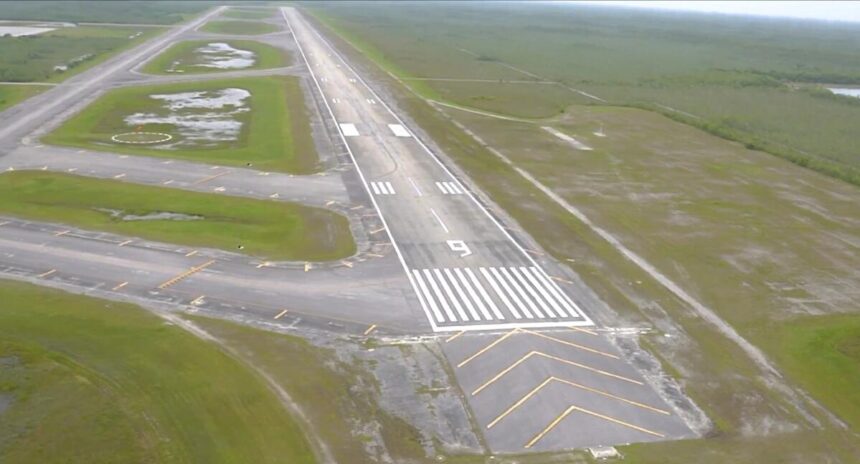Introduction
Alligator Alcatraz, a migrant detention facility under construction deep in the Florida Everglades, is stirring fierce backlash. Built at the abandoned Dade-Collier Training and Transition Airport, the camp leverages natural wildlife barriers—alligators and pythons—to prevent escapes, drawing criticism for its environmental and human rights implications.
What Is “Alligator Alcatraz”?

Named by Florida Attorney General James Uthmeier, Alligator Alcatraz is slated to house up to 5,000 migrants in tents and FEMA trailers starting early July. Located about 70 km from Miami, the remote swamp site is being fast-tracked under a federal‑state partnership and could cost $450 million annually, funded by FEMA reimbursements .
Environmental and Legal Concerns
- Threat to ecosystem: Environmentalists note the site’s proximity to protected wetlands and Big Cypress Preserve, stating it may harm endangered species and fragile habitats .
- Indigenous rights: The Miccosukee tribe, including activist Betty Osceola, calls the land sacred and accuses the state of bypassing tribal consultation .
- Failure to review: Miami-Dade Mayor Daniella Levine Cava has demanded an environmental impact assessment, highlighting the expedited use of emergency powers .
Human Rights and Operational Risks
Civil-liberties groups such as the ACLU and the Friends of the Everglades condemn the project. They warn of overcrowded tents, insufficient medical care, and difficulty accessing legal representation in the isolated location . The remote nature of the camp raises concerns about accountability, especially in emergencies like hurricanes.

Political Strategy Behind the Swamp Camp
The facility is part of a broader push aligned with President Trump’s mass deportation agenda. DHS Secretary Kristi Noem highlighted “turbo speed” coordination with Florida to provide a cost-effective expansion of detention beds .
Opposition and Protests
On-site protests have drawn hundreds advocating for environmental protection and human dignity. Protesters argue that the project reflects governance driven by political messaging rather than practical planning.
What Happens Next?
The facility is expected to begin operations by early July, with lawmakers also considering a second site at Camp Blanding . Legal challenges are anticipated over land seizure and environmental regulation, and the Miccosukee tribe has promised potential lawsuits defending both ecosystem and cultural heritage.
Conclusion
Alligator Alcatraz shines a harsh light on how the intersection of immigration enforcement, emergency powers, and environmental stewardship can collide. As advocates and officials clash, the Everglades camp will become a test case in balancing security, human rights, and ecological responsibility.
Learn more on related issues: Miccosukee tribe land rights, Florida environmental policy controversies, or dive deeper into **Gaza ceasefire diplomacy** at The Morning News Informer.

According to The Washington Post, construction began rapidly after FEMA funding was approved.
Human rights groups like the ACLU have condemned the facility as a cruel expansion of Trump-era immigration policies.
Environmentalists from Friends of the Everglades say the center poses an “imminent ecological threat” to the region’s biodiversity.










